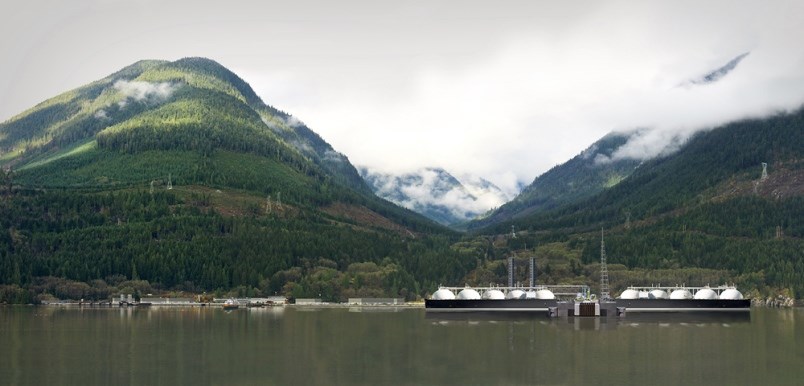It is another step toward the liquefied natural gas facility making its final investment decision and is accompanied by significant federal government support.
The Woodfibre LNG Project has ordered its Cryogenic Heat Exchanger (MCHE), which converts the natural gas at 160 degrees Celsius, allowing it to be shipped overseas in tankers.
The machinery is where natural gas is liquefied and sub-cooled, in other words.
"This piece of equipment is the heart of the liquefaction process and one of the most important requirements for producing LNG," reads a press release from the company.
"This purchase indicates Woodfibre LNG's continued commitment to moving forward towards our FID and start of construction later this year," said president David Keane in the release.
Tracey Saxby, of My Sea to Sky said Woodfibre LNG was "putting the cart before the horse” with this purchase.
"Most companies would make a final investment decision before purchasing capital equipment. With the price of LNG in Asia hitting a10-year low, this seems like a risky move by Woodfibre LNG," she said, adding that the company still has to apply for amendments to their environmental assessment certificates, and other permits.
The federal government is boosting the purchase announcement by Woodfibre LNG and removing financial barriers to the Squamish project as well as the LNG Canada Project.
"In keeping with previous public statements that trade barriers would not be permitted to stand in the way of these historic private sector investments, the government is providing relief from duties on fabricated steel contained in modules for the Woodfibre LNG project as well as the previously announced LNG Canada project," reads a federal government press release.
Previously, a 2017 ruling made by the Canadian International Trade Tribunal found that the dumping of some goods from China, Korea and Spain have had a negative impact on Canada’s economy.
As a result, anti-dumping fees were imposed on fabricated industrial steel components from those countries. These tariffs could reach up to 45.8 per cent.
Woodfibre and others argued that those tariffs were unfair, but in November 2018, the Canada Border Services Agency ruled the duties would apply to LNG modules as well.
However, this latest announcement protects the Woodfibre and LNG Canada projects from this.
The federal government release states that the modules that would have been subject to the tariffs are key components that are not available in Canada.
Remission of anti-dumping and countervailing duties is generally provided only in situations where there are exceptional circumstances, such as domestic short supply, the feds say.
"As Canada’s transition to a cleaner future gains momentum, our government will continue to support projects that have the potential to meet our energy needs while helping more people get ahead. Woodfibre LNG, along with LNG Canada, are prime examples of how economic growth, environmental protection and partnerships with Indigenous Peoples can come together to create good, well-paying middle-class jobs," said Minister of Finance Bill Morneau, in the release on Friday.
Regarding the steel tarriffs, Saxby questioned why provincial and federal governments are "working so hard" to help Woodfibre LNG.
"The Federal government’s support of Woodfibre LNG makes a mockery of their motion declaring a “climate emergency,” she said.
“We should not be investing in new fossil fuel infrastructure that will lock us into extreme carbon pollution for another 25 to 40 years.”
~With files from Steven Chua
**Please note, this story has been modified and updated since it was first published to include a quote from environmental activist group My Sea to Sky.




